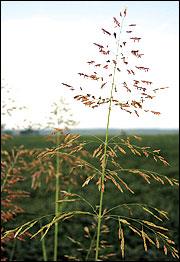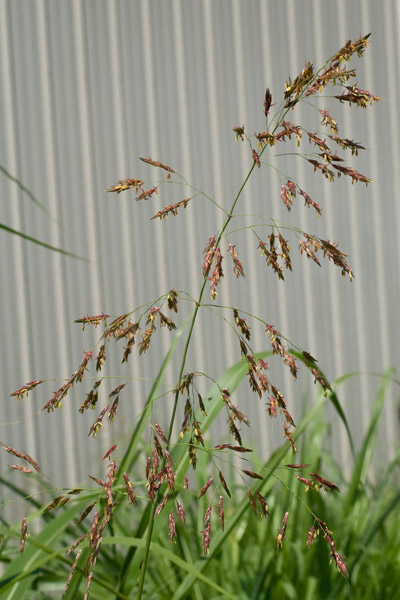Professor Toni DiTommaso is working on a nation-wide research project assessing the distribution and genetic diversity of the invasive perennial weed, Johnsongrass (Sorghum halepense). Currently, NY State is at the geographic northern-most limit of its range, but it is expected to increase in abundance in the state over the coming decades. He has included a brief description and several images of this species below to help with identification in case you are not familiar with it.
He is reaching out to you to help him locate Johnsongrass populations in NY State as he would like to collect seeds from these plants later this month and into early fall. These seeds along with seeds collected in other regions of the country will be grown in “common gardens” at locations across the country including here in central NY. This research will give us a good idea of how well adapted different populations of this invasive species are to growing in various regions of the country and in which regions it may become especially troublesome to manage.
If you know of Johnsongrass populations in NY State that have not yet been killed by herbicides or mowed (he needs to collect seeds), please e-mail Toni (ad97@cornell.edu) the precise location of the population (GPS coordinates, road intersections, etc.), the type of habitat it is found in (e.g. corn field, roadside, back of barn), and the approximate size of the population(s) (e.g. 10 ft x 15 ft). If you would like to take a few pictures of the plants and e-mail them to Toni, he could try to confirm that it is indeed Johnsongrass.
When this research is completed in a few years, he hopes to present his findings at various agricultural extension venues in the State.
Thank you for your help and he looks forward to hearing from you.
Toni DiTommaso (ad97@cornell.edu)
Weed Ecology & Management Lab
Soil and Crop Sciences
903 Bradfield Hall
Cornell University
BRIEF DESCRIPTION: Johnsongrass is a tall, coarse, grass with stout rhizomes. It grows in dense clumps or nearly solid stands and can reach 8 feet (2.4 meters) in height. Leaves are smooth, 6-20 inches (15.2-50.8 cm) long, and have a white midvein. Stems are pink to rusty red near the base. Panicles are large, loosely branched, purplish, and hairy. Spikelets occur in pairs or threes and each has a conspicuous awn. Seeds are reddish-brown and nearly 1/8 inch (0.3 cm) long.






